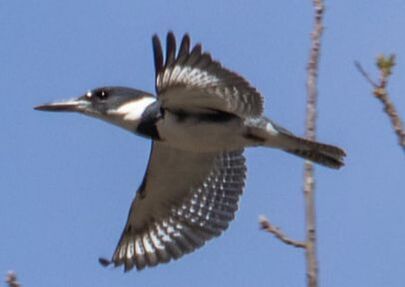Interactive map of our Birdnet units:
Current units:
Click on individual links below to zoom in on each of our units:
- Outside of Selinsgrove along Penns Creek (Snyder County)
- Rural Mifflinburg along Penns Creek (Union County)
- Critical Zone Observatory near Shaver Creek (Educational Center just south of Centre County)
- Hiawatha Paddleboat dock near Williamsport (Lycoming County)
- Montour Preserve observation pond (Montour County)
- Outside of Mill Hall near Cedar Run, a tributary of Fishing Creek (Clinton County)
- Sunbury near Shamokin Creek (Northumberland County)
- Shamokin Library above Shamokin Creek (Northumberland County)
- Shavertown near headwaters Toby Creek (Luzerne County)
- Waterdale Lodge near Mosquito Creek (Lycoming County)
- Lehman Sanctuary near East Fork Harvey's Creek and wetlands (Luzerne County)
Grant helps spark new initiative to study bird
|
The Middle Susquehanna Riverkeeper Association recently received a technology-based grant from the Campbell Foundation to kick off a new initiative called the Waterway Health Indicator Program.
The money from the grant will be used to create and install BirdNet devices that record, identify and upload common bird sounds to an interactive map. "Our goal is a two-phase process," said Riverkeeper John Zaktansky. "In the first phase, we will be working with the team at the Susquehanna University Freshwater Research Institute to collect and assess data that will help us develop patterns between certain bird species and water quality. The second phase will be to use units to monitor waterways across the region, using those indicators to help us better identify trends in water quality and use them to track potential pollution issues." One BirdNet prototype unit is already online on the banks of Penns Creek in Snyder County. Since March 1, at this location, there have been more than 8,000 detections of 42 different species including those that depend on or frequent waterways such as kingfishers, blue herons, Canada geese, bald eagles, sora and various types of ducks. Results can be seen at app.birdweather.com/stations/790 "In general, I think this project is a great research opportunity because we often think about how to restore habitats so that the birds will return, rather than learning if a riparian corridor or stream is impaired based on the birds that are present," said Matt Wilson, the head of Susquehanna University's Freshwater Research Institute. "It's about as close to literally listening for the canary in the coal mine as we can get. Not to mention how accessible the program will be for citizen science -- anyone with access and permission to place a unit near a stream could contribute and learn something about that habitat while contributing to larger questions about stream health." Host locations are currently being assessed, with the first few units expected to be installed and online within a month. "While we do have some sites already in the works, we are open to partnering with people who have an interest in this sort of work for potential future sites," said Zaktansky. "At this time, we are using sites that are along waterways that also have easy-to-access, already available electricity and wifi. Future phases of units will be powered by solar and cell service to allow for more remote access, but for now, we will need sites that can help provide both wifi and electricity, as well as some privacy." The units are being built and installed by Fessler IT Consulting out of Sunbury. "Technology is a powerful tool for helping to protect the environment and promote sustainability. As the Susquehanna River grapples with pollution, and other environmental crises, technology is proving to be an invaluable partner in finding ways to reduce our impact on our waterways," said Doug Fessler, of Fessler IT Consulting. "We are excited to use this new technology to monitor aquatic habitats and track bird species throughout our area. The goal is to use this new technology to help to identify potential threats to aquatic bird habitats in our local area." One of many benefits of this project is monitoring migration patterns in real time, Fessler added. |
|
"This year, I was able to follow the Robin migration from far south as the Southwest Mexico to Pennsylvania. The cool thing is I knew there were in the area before I could hear or see them myself."
More information will be available soon on this project via the Middle Susquehanna Riverkeeper Association's dedicated BirdNet page: www.middlesusquehannariverkeeper.org/birdnet.html
"One of the cool things about this project is that we will be among the first to be doing this, to my knowledge, anywhere," said Zaktansky. "While others are using similar devices to monitor a specific site or watch for a certain species, the fact that we plan to develop this into a new way to better monitor stream health across a large watershed is exciting."
You can send questions, comments or suggestions about this initiative to Riverkeeper John Zaktansky via email at [email protected]
More information will be available soon on this project via the Middle Susquehanna Riverkeeper Association's dedicated BirdNet page: www.middlesusquehannariverkeeper.org/birdnet.html
"One of the cool things about this project is that we will be among the first to be doing this, to my knowledge, anywhere," said Zaktansky. "While others are using similar devices to monitor a specific site or watch for a certain species, the fact that we plan to develop this into a new way to better monitor stream health across a large watershed is exciting."
You can send questions, comments or suggestions about this initiative to Riverkeeper John Zaktansky via email at [email protected]

